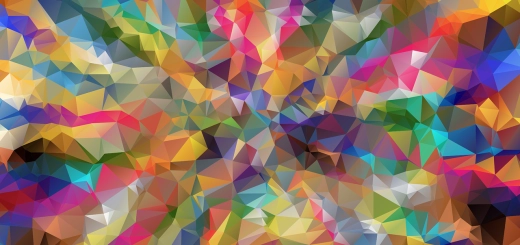Khonsu: God of the Moon and Time

Looking for more amazing products? Check out our online store and explore our collection here! Happy shopping!
Before diving in, please note: This post is for informational purposes only. If you’d like to know more about how we approach topics, feel free to check out our friendly Disclaimer Page.
Hey there, amazing readers! 
We’re committed to delivering quality posts, and your support (even just sticking around despite the ads) means everything to us. So, bear with us, and thanks for helping us keep the good vibes rolling. Now, on to the fun stuff!
TRANSLATE BUTTON AT THE END OF THE ARTICLE
A Quick Overview: Introduction to Khonsu: God of the Moon and Time
Khonsu is a significant deity in ancient Egyptian mythology, revered as the god of the moon and time.
He is often depicted as a young man with a sidelock of youth, wearing the lunar disk and crescent on his head.
Khonsu was associated with healing, fertility, and protection, and was believed to have the power to control the passage of time.
His name, which means "traveller," reflects his role in guiding the moon across the night sky.
Origins and Mythology of Khonsu
Khonsu is believed to have originated during the Middle Kingdom period of ancient Egypt, around 2055-1650 BCE.
He was the son of the god Amun and the goddess Mut, making him a member of the Theban triad along with his parents.
Khonsu was often depicted as a child or a young man, symbolizing growth, rebirth, and the cyclical nature of time.
He was also associated with the concept of eternal renewal and the passage of the lunar phases.
In Egyptian mythology, Khonsu was considered a powerful and benevolent deity who could protect against evil forces and bring healing and prosperity to his followers.
He was often invoked in rituals and prayers seeking blessings for fertility, health, and success.
Khonsu was also believed to have the ability to influence the outcome of battles and wars, making him a revered figure among soldiers and warriors.
Depictions of Khonsu in Ancient Egyptian Art
Khonsu was typically depicted in ancient Egyptian art as a young man with a falcon-headed headdress, holding the ankh (symbol of life) in one hand and the was scepter (symbol of power) in the other.
He was often portrayed with a lunar disk and crescent on his head, symbolizing his connection to the moon.
Khonsu’s youthful appearance and regal attire reflected his status as a divine prince and a protector of the people.
Artwork featuring Khonsu often depicted him in various poses and settings, such as standing, sitting, or walking.
He was sometimes shown with his mother, Mut, and his father, Amun, in family scenes that highlighted their close bond and divine lineage.
Khonsu’s presence in temples and tombs symbolized his role as a guardian of the afterlife and a guide for the deceased on their journey to the underworld.
Khonsu’s Role in Egyptian Religion
In ancient Egyptian religion, Khonsu played a vital role as a god of the moon, time, and healing.
He was associated with the cycles of nature, the passage of time, and the phases of the moon, which were believed to influence human life and destiny.
Khonsu was also revered as a deity of fertility and protection, with the power to bring abundance and prosperity to those who worshipped him.
Devotees of Khonsu often sought his guidance and blessings in times of illness, hardship, or uncertainty.
Priests and priestesses performed rituals and ceremonies in his honor, offering prayers, incense, and symbolic offerings to appease the god and seek his favor.
Khonsu was believed to listen to the prayers of his followers and grant their wishes for health, wealth, and success in life.
The Symbolism of the Moon in Ancient Egypt
The moon held great symbolic significance in ancient Egyptian culture, representing the cycles of life, death, and rebirth.
As the god of the moon, Khonsu was associated with the lunar phases, which were believed to influence the growth of crops, the breeding of animals, and the fertility of human beings.
The waxing and waning of the moon were seen as reflections of the eternal struggle between light and darkness, life and death.
The lunar disk and crescent symbolized the cyclical nature of time and the eternal renewal of the cosmos.
Khonsu was revered as a guardian of the night sky, guiding the moon on its nightly journey across the heavens.
The moon was also associated with magic, divination, and the unseen forces of the universe, making Khonsu a powerful deity with the ability to transcend earthly boundaries and connect with the divine realm.
Khonsu’s Connection to Time and Healing
Khonsu’s role as the god of time reflected his ability to control the passage of days, months, and years.
He was believed to govern the cycles of nature and the seasons, influencing the growth of crops, the birth of animals, and the rhythms of human life.
Khonsu’s association with healing and fertility made him a popular deity among healers, physicians, and midwives who sought his assistance in curing illnesses and promoting well-being.
The ancient Egyptians believed that Khonsu could bring about miraculous cures and restore health to the sick and injured.
Temples dedicated to Khonsu often served as centers of healing and spiritual renewal, where priests and priestesses performed rituals and ceremonies to invoke the god’s healing powers.
Patients would visit these temples seeking blessings and guidance from Khonsu, hoping for a speedy recovery and a return to health.
Temples and Shrines Dedicated to Khonsu
Several temples and shrines were built in ancient Egypt to honor Khonsu and celebrate his role as the god of the moon and time.
One of the most famous temples dedicated to Khonsu is located in the ancient city of Karnak, near modern-day Luxor.
The Temple of Khonsu at Karnak was constructed during the New Kingdom period and served as a place of worship and pilgrimage for devotees of the god.
The temple complex at Karnak featured a sanctuary dedicated to Khonsu, where priests conducted rituals and ceremonies to honor the god and seek his blessings.
The walls of the temple were adorned with reliefs and inscriptions depicting Khonsu in various forms and poses, showcasing his divine attributes and powers.
Pilgrims would visit the temple to make offerings, pray for guidance, and seek healing from the god of the moon and time.
Festivals and Celebrations Honoring Khonsu
Festivals and celebrations dedicated to Khonsu were held throughout the year in ancient Egypt, with the most important being the Feast of Khonsu.
This annual festival took place in the month of Epiphi and involved elaborate rituals, processions, and offerings to honor the god of the moon and time.
Priests and devotees would gather at temples and shrines to participate in ceremonies that celebrated Khonsu’s role in the cosmic order and the renewal of life.
During the Feast of Khonsu, statues of the god were carried in procession through the streets, accompanied by music, dance, and chanting.
Offerings of food, drink, and incense were presented to Khonsu as a sign of devotion and gratitude for his blessings.
The festival was a time of joy, feasting, and merriment, as people came together to celebrate the power and benevolence of the god of the moon and time.
Khonsu’s Family and Relationships with Other Gods
Khonsu was part of the Theban triad, a divine family that included his parents, Amun and Mut.
Amun was the king of the gods and the patron deity of Thebes, while Mut was a powerful goddess associated with motherhood, fertility, and protection.
Khonsu’s close relationship with his parents symbolized the unity of the cosmos and the balance of masculine and feminine energies in the universe.
Khonsu was also believed to have connections with other major deities in the Egyptian pantheon, such as Thoth, the god of wisdom and writing, and Sekhmet, the lioness goddess of war and healing.
Thoth was associated with the moon and the cycles of time, making him a natural ally of Khonsu in guiding the celestial bodies and recording the passage of history.
Sekhmet, on the other hand, was a fierce warrior who could bring both destruction and healing, reflecting the dual nature of Khonsu as a benevolent healer and a powerful protector.
Modern Interpretations of Khonsu
In modern times, Khonsu continues to be a figure of fascination and reverence for those interested in ancient Egyptian mythology and religion.
His association with the moon, time, healing, and fertility resonates with contemporary notions of spirituality, wellness, and the interconnectedness of the natural world.
Some modern practitioners of paganism and neopaganism have adopted Khonsu as a patron deity, invoking his name in rituals and ceremonies that seek guidance, protection, and blessings.
Scholars and historians have also studied Khonsu’s role in ancient Egyptian culture and religion, exploring the symbolism of the moon, time, and healing in the context of the wider belief system of the time.
Artifacts, inscriptions, and archaeological remains related to Khonsu have shed light on the significance of the god in the lives of the ancient Egyptians and the ways in which he was worshipped and venerated throughout the centuries.
Worship and Offerings to Khonsu
Devotees of Khonsu would offer prayers, incense, and symbolic gifts to honor the god and seek his blessings.
Offerings of food, drink, and flowers were also presented in temples and shrines dedicated to Khonsu as signs of devotion and gratitude.
Ceremonies and rituals were performed by priests and priestesses to invoke the god’s presence and ask for his guidance and protection.
Priests of Khonsu served as intermediaries between the divine realm and the mortal world, conducting ceremonies and sacrifices on behalf of the community.
They would chant hymns, recite prayers, and perform sacred dances to honor the god and seek his favor.
Devotees believed that by showing reverence and devotion to Khonsu, they could earn his protection and blessings in return.
Legacy of Khonsu in Egyptian Culture and Beyond
Khonsu’s influence can still be seen in modern Egyptian culture, where the moon remains a symbol of beauty, mystery, and spiritual significance.
The legacy of Khonsu as the god of the moon and time continues to inspire artists, writers, and scholars who seek to understand the ancient Egyptian worldview and its enduring impact on the world.
Khonsu’s role as a healer, protector, and guide for the living and the dead reflects the timeless themes of life, death, and rebirth that have captivated humanity for centuries.
His connection to the cycles of nature, the passage of time, and the mysteries of the moon symbolizes the eternal quest for knowledge, enlightenment, and spiritual fulfillment that transcends cultural boundaries and speaks to the universal human experience.
Conclusion
In conclusion, Khonsu, the god of the moon and time, played a vital role in ancient Egyptian religion and mythology.
Revered as a benevolent deity of healing, fertility, and protection, Khonsu was worshipped by priests, pharaohs, and common people alike for his ability to bring blessings and prosperity to his followers.
Through temples, festivals, and rituals, devotees honored Khonsu as a divine guide and guardian of the cosmos, seeking his guidance and protection in times of need.
Khonsu’s legacy as a symbol of the moon, time, and healing continues to resonate with modern audiences who are captivated by the mystique and majesty of ancient Egyptian culture.
His enduring presence in art, literature, and popular culture serves as a reminder of the timeless themes of life, death, and rebirth that have fascinated humanity for millennia.
As a god of the moon and time, Khonsu embodies the eternal struggle between light and darkness, life and death, and the cyclical nature of the cosmos that connects all living beings in a sacred dance of creation and renewal.

The Enlightenment Journey is a remarkable collection of writings authored by a distinguished group of experts in the fields of spirituality, new age, and esoteric knowledge.
This anthology features a diverse assembly of well-experienced authors who bring their profound insights and credible perspectives to the forefront.
Each contributor possesses a wealth of knowledge and wisdom, making them authorities in their respective domains.
Together, they offer readers a transformative journey into the realms of spiritual growth, self-discovery, and esoteric enlightenment.
The Enlightenment Journey is a testament to the collective expertise of these luminaries, providing readers with a rich tapestry of ideas and information to illuminate their spiritual path.
Our Diverse Expertise
While our primary focus is on spirituality and esotericism, we are equally passionate about exploring a wide range of other topics and niches 

To ensure we provide the most accurate and valuable insights, we collaborate with trusted experts in their respective domains 
Our blog originally focused on spirituality and metaphysics, but we’ve since expanded to cover a wide range of niches. Don’t worry—we continue to publish a lot of articles on spirituality! Frequently visit our blog to explore our diverse content and stay tuned for more insightful reads.
Hey there, amazing reader! 
Check out our store here and take a peek at some of our featured products below! Thanks for being awesome!











